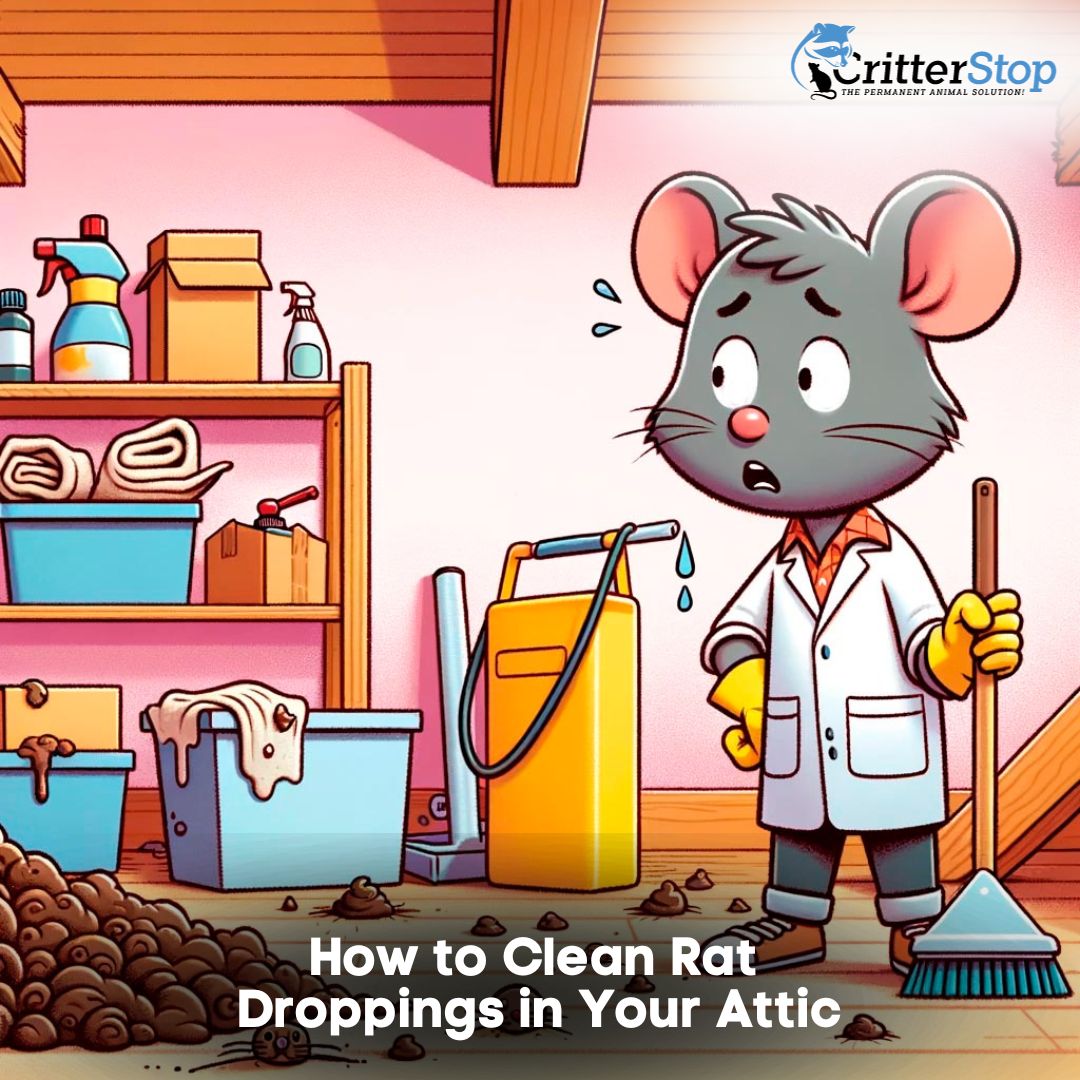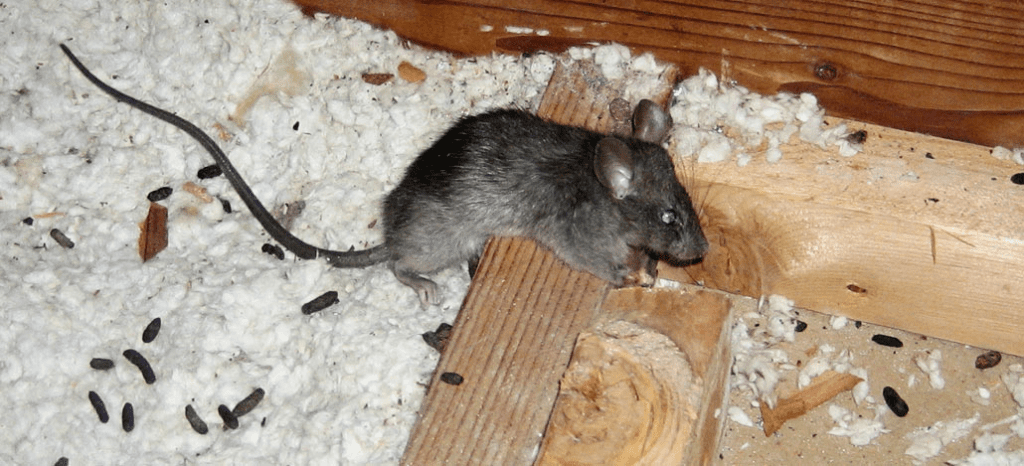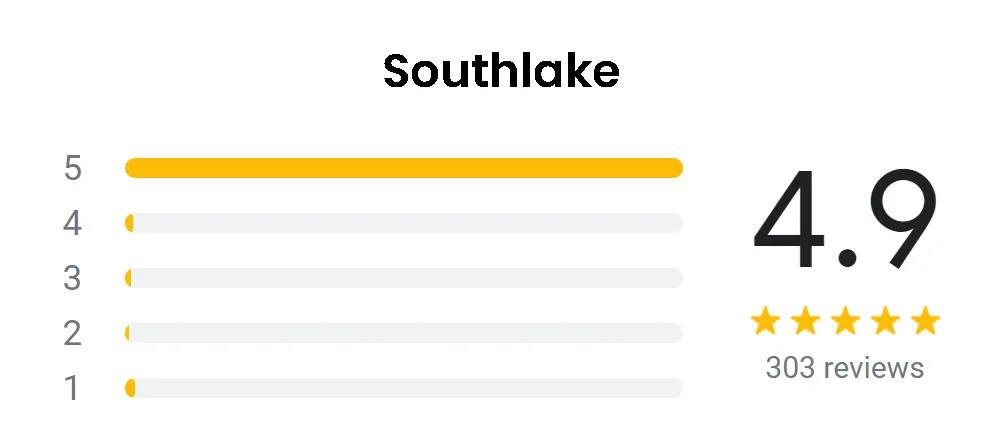
Attics are one of the most common areas that homeowners do not frequently access. Therefore, attics often become invaded by pests without homeowners being aware. Has your recent attic visit made you suspicious about the presence of unwanted critters? Does your attic reek of foul odors? Your attic has most likely been invaded by animals.
We at Critter Stop are wildlife removal experts, so we are plenty sure that a warm and dark attic seems quite attractive to many critters. However, it is undoubtedly a favorite hangout spot for rats and mice. They will always be on the lookout for any entry point to your attic. Once they find an access point to your attic, they will get too comfortable there and refuse to leave.

Rodents like mice and rats are careless animals and they tend to leave large groupings of rodent poop wherever they go, so it's not hard to find signs of rat activity. These droppings not only look unappealing and smell pungent, but they also are a huge health hazard to everyone on the property. Therefore, if you are dealing with a rat problem in your attic, you will not only have to worry about rodent control, but you will also have to consider a thorough cleanup for rat or mouse poop in the attic.
Due to the many contagious diseases that rats carry, it is crucial to take all the precautionary measures when cleaning rat droppings from an infested area, such as wearing gloves, using a vacuum and/or a broom, and using plastic bags. Do you want to know how to clean up right after the rat infestation in your attic? Scroll down to learn everything you need to know about cleaning rat droppings.
Have you ever wondered how to differentiate between a rat or mouse infestation? Other than spotting the rodents themselves, rodent feces can be another useful way to identify the presence of exact species in your attic. Once you know the type of rodent you are dealing with, it will be easy to choose the right method for its removal.

When we provided the rodent removal services, we found some signs that helped us identify what kind of critter we were dealing with based on their droppings. Here is some advice you can distinguish between mouse or rat droppings in the attic:
Here's what you need to know to correctly identify rat poop. If the rat feces are found in the attic, it is quite safe to assume that the invaders are roof rats. These animals often like to build their nests in high places. Each roof rat produces 40 to 50 dark brown droppings each day. Therefore, the more they stay, the more contaminated your attic will get.
Rat waste usually measures only half an inch long and is usually scattered all over the place. The shape of rat droppings resembles sausages with pointed ends.
Like brown rats, mice also like to stay close to the ground. However, as long as it is a warm, dark, and cluttered place with a steady supply of food, mice will love to nest there no matter how high or close it is to the ground.
Each mouse produces 50 to 70 droppings each day. Mice droppings are a quarter-inch long and much lighter in color than rat droppings.

Do you think your job as a responsible homeowner is over after removing the rats from the attic? Absolutely not. There is still a lot of work for you to do in the attic - thorough cleanup to remove the rat feces from the attic. Rats carry a lot of contagious diseases for both humans and pets through their fur, saliva, and droppings.
Therefore once the infestation is gone, you must not waste any time and clean the attic properly to prevent the spread of any diseases. Not sure how to clean rat poop safely and effectively? Here is a simple step-by-step guide prepared by our expert team at Critter Stop:
Many homeowners know that rats carry infected ticks, fleas, and mites in their fur. However, what they don't know is that they also have many parasites in their droppings. Therefore, the most effective and safest approach for cleaning up the attic after a rodent infestation is to call a professional rat removal company.
They will remove the rat feces and bodies of dead rodents and disinfect the attic properly. However, if you want to save a little money, you can do it yourself too. However, you will have to wear extra thick gloves, masks, and protective clothing to avoid getting infected.

If you have set multiple rat traps in your attic, you might also find a few dead rodents while cleaning up. Dead rodents may not bite you but can transmit many contagious diseases through their fur. Therefore, you must remain extra careful while disposing of the dead rodents, or even wear gloves to be extra careful.
When you work up the courage, pick up the dead rodent and dump it in a bag. Seal the bag properly, then throw it in a trash can.
Rats are quite fond of gnawing and chewing materials. Therefore, during their stay, they will chew on almost anything they find in your attic. You will notice gnaw marks on almost everything from clothing to furniture, appliances, and electrical wires.
However, one thing that will certainly be damaged due to a rat infestation in your attic is the insulation material. One of the reasons why rodents nest in the attic is because of the warm and fluffy insulation. It is often the perfect nesting material. If rats have been in your attic for an extended period, they will almost certainly have contaminated it with their rat feces and urine, which can carry a variety of diseases.
When cleaning the attic after rat removal, check whether the insulation is badly contaminated or if it is tolerable. A trained rat removal professional can often help with this. While the answer is sometimes obvious, there are many times when the severity of the rat infestation falls in a gray area, with the necessity of insulation replacement depending on your risk tolerance/comfort level.
One thing to remember though is that the air in your attic and the air in your home is inextricably linked. So if you have urine-soaked and feces-filled insulation upstairs, you will inevitably be breathing it in downstairs. For this reason, homeowners often replace their insulation if they have had animals in their attic for an extended period.
We often get asked by homeowners, “Is it possible to remove the rat feces without replacing the attic insulation?” The answer is unfortunately “No, it is not.” When these animals are in an attic, rat poop is buried throughout the insulation and in cracks and crevices not visible from the surface.
Additionally, even if all of the rat poop was visible, imagine throwing a bag of rice (about the size of rat droppings) across your entire attic then retrieving each piece of rice and putting it back in the bag. This would be even more time-consuming, labor-intensive, and expensive than simply replacing the insulation!
After replacing the attic insulation, it is time to disinfect well. If you want to decontaminate the whole area and remove the smell of urine and droppings as well as pheromones left behind by the rodents in your attic, you must disinfect thoroughly. Rat removal experts often do this through “fogging” the attic with sanitizing agents.
Cleaning rat droppings may seem off-putting for obvious reasons, but it is also a dangerous task due to the potential health risks. Like other rodents, rats are also carriers of many contagious diseases, including hantavirus, leptospirosis, rat-bite fever, and many others. Therefore, if you don't want to risk your safety, you must hire a professional rat removal company. Critter Stop is one of the reliable rat removal services here in Texas. From rat removal to thorough cleanup, we will help you with everything. So call us at (214) 234-2616 to make your attic clean and smell fresh after rat infestation!
Visit our Critter Library and learn more about our furry friends







